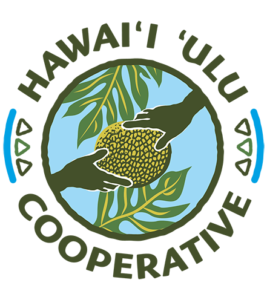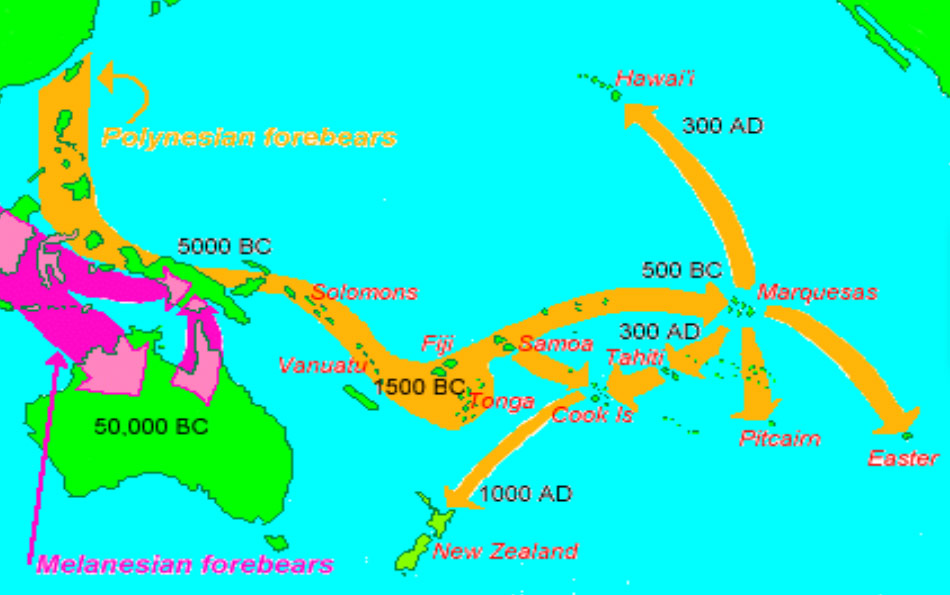Breadfruit Across the Pacific
Breadfruit already exists in the Philippines but isn’t widespread and remains relatively unknown. However, its ancestor, breadnut, is native to the Philippines. The scientific name for breadnut – Artocarpus camansi – comes from the Tagalog name for the tree: “Kamansi.” Other places where breadnut is native are neighboring Papua New Guinea and Indonesia.
Breadfruit (Artocarpus altilis) is a closely related species developed by humans during their eastward migration out of this region across the Pacific Islands, as the crop was gradually selected for more flesh and fewer seeds. Hawai‘i is at the farthest eastern edge of this migration path, which is likely why the Hawaiian breadfruit variety or ‘ulu maoli is completely seedless!
Map above: courtesy of Princeton University, showing the migration routes followed by the Melanesian and Polynesian peoples in the populating of the Pacific. Orange arrow in upper left points to the Taiwan / Philippines region where Polynesian forebears originated from.
Breadfruit was likely introduced to the Philippines several hundred years ago by Spanish colonists. The Philippines is incredibly diverse, with over 100 dialects; accordingly, breadfruit goes by several names, including Kulo, Kolo, Kulu, Rimas, and Rema.
While breadfruit trees are now dotted across many islands in the Philippines, most trees are unmaintained, and the fruit is utilized for household consumption only, not for commercial sale. It’s commonly eaten in the mature form and steamed with salt or roasted in a fire of rice husks until charred and topped with a saucy adobo.



